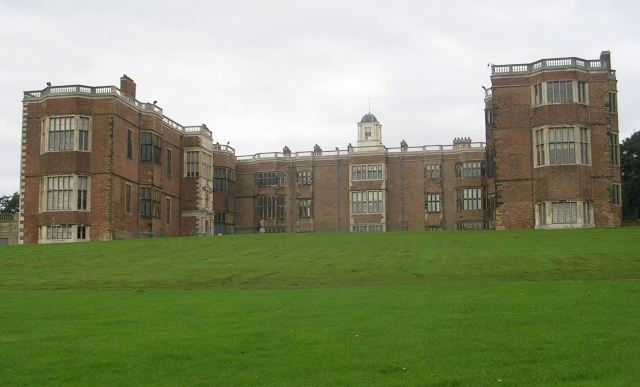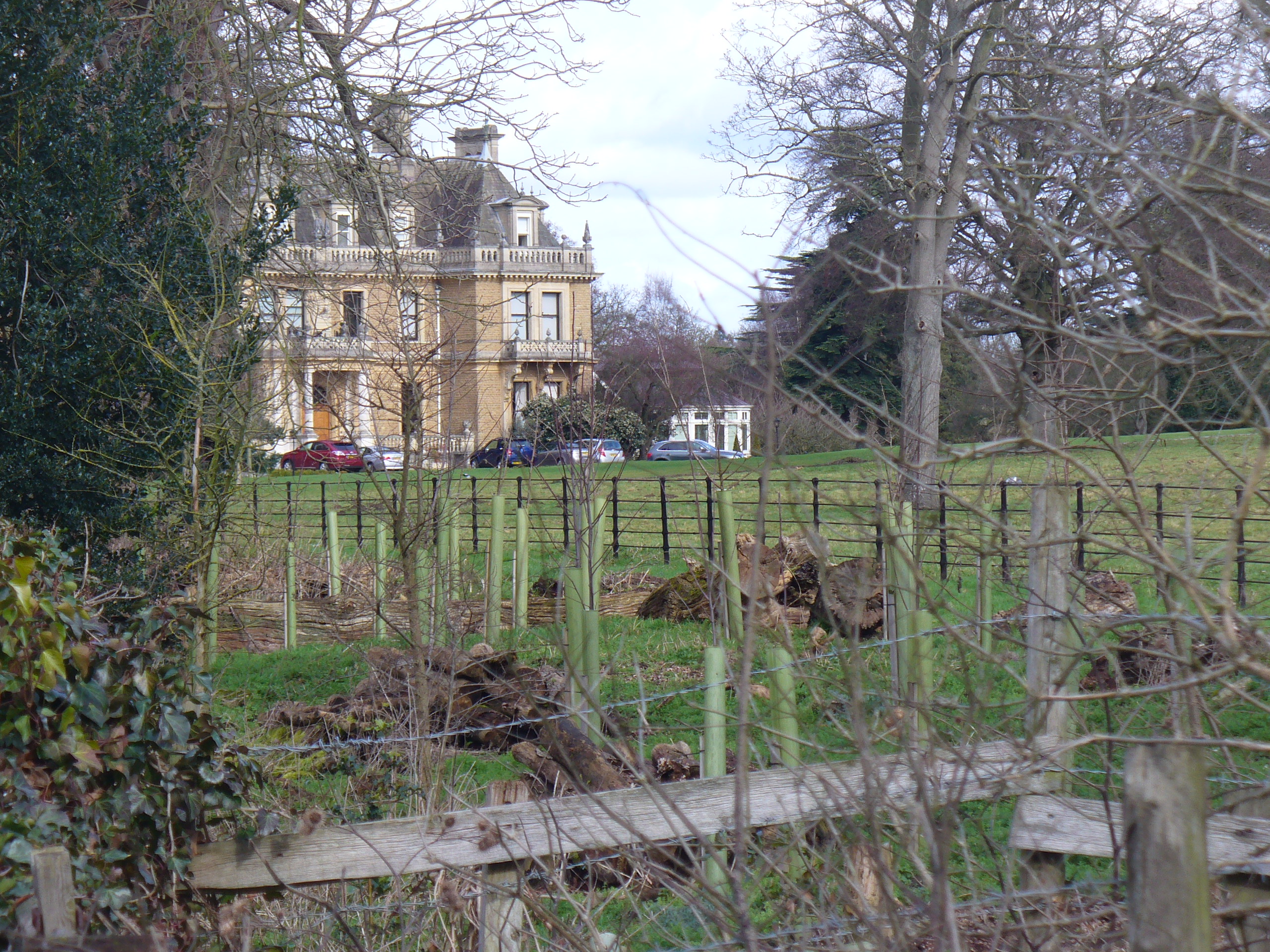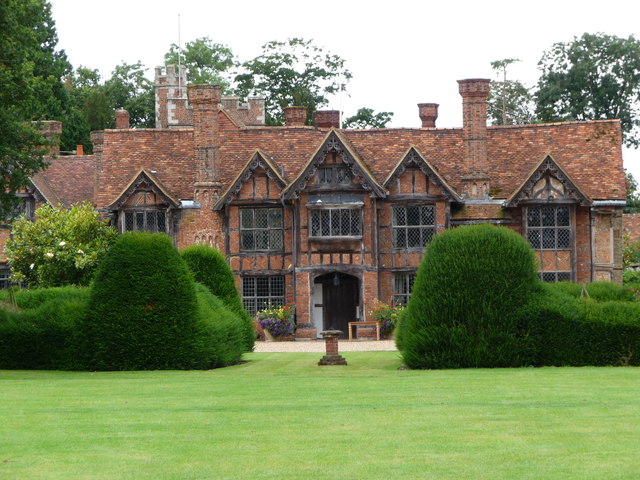|
John Machell (MP For Horsham)
John Machell (1637–1704) was for twenty years Member of Parliament for Horsham, Sussex, during the reigns of Charles II, James II and William III and Mary II. By the marriage of his daughter Isabella Machell (1670–1764) to Arthur Ingram, 3rd Viscount of Irvine, he became the grandfather of the fourth, fifth, sixth, seventh and eighth Viscounts of Irvine, and great-grandfather of the ninth, seated at Temple Newsam near Leeds, whose family inherited and augmented his valuable property of Hills house at Horsham, and continued the parliamentary tradition there. Family origins John Machell's father, Mathew Machell (c. 1605–1682), was a great-grandson of John Machell, Sheriff of London in 1555–56. Mathew's father John (1580–1647) married Jane, daughter of Sir Nicholas Woodroffe of Poyle, Surrey, in 1599, and, developing his London and East India Company commercial interests, and having established himself in Wendover, Buckinghamshire, remarried in 1624 to Lady Elizabet ... [...More Info...] [...Related Items...] OR: [Wikipedia] [Google] [Baidu] |
Member Of Parliament
A member of parliament (MP) is the representative in parliament of the people who live in their electoral district. In many countries with bicameral parliaments, this term refers only to members of the lower house since upper house members often have a different title. The terms congressman/congresswoman or deputy are equivalent terms used in other jurisdictions. The term parliamentarian is also sometimes used for members of parliament, but this may also be used to refer to unelected government officials with specific roles in a parliament and other expert advisers on parliamentary procedure such as the Senate Parliamentarian in the United States. The term is also used to the characteristic of performing the duties of a member of a legislature, for example: "The two party leaders often disagreed on issues, but both were excellent parliamentarians and cooperated to get many good things done." Members of parliament typically form parliamentary groups, sometimes called caucuse ... [...More Info...] [...Related Items...] OR: [Wikipedia] [Google] [Baidu] |
East India Company
The East India Company (EIC) was an English, and later British, joint-stock company founded in 1600 and dissolved in 1874. It was formed to trade in the Indian Ocean region, initially with the East Indies (the Indian subcontinent and Southeast Asia), and later with East Asia. The company seized control of large parts of the Indian subcontinent, colonised parts of Southeast Asia and Hong Kong. At its peak, the company was the largest corporation in the world. The EIC had its own armed forces in the form of the company's three Presidency armies, totalling about 260,000 soldiers, twice the size of the British army at the time. The operations of the company had a profound effect on the global balance of trade, almost single-handedly reversing the trend of eastward drain of Western bullion, seen since Roman times. Originally chartered as the "Governor and Company of Merchants of London Trading into the East-Indies", the company rose to account for half of the world's trade duri ... [...More Info...] [...Related Items...] OR: [Wikipedia] [Google] [Baidu] |
Cobham Park
Cobham Park is a set of about 22 apartments in and around a converted country mansion and associated lawn, gardens, fields and woodlands in the mainly rural south of the parish of Cobham, Surrey in England. Its old extent takes in the majority of Downside, Surrey, centred on a row of staff cottages. A medieval predecessor was home to a local lord of the manor. In the 1720s a new mansion was built in the large grounds. John Ligonier, 1st Earl Ligonier made it his home and within a few decades it was bought by Harvey Christian Combe, of Combe Delafield and Co. brewery, a member of the Combe family and once elected Lord Mayor of London. Much of the estate, but excluding the main house, is owned by the same family. There are fields on the quite high left bank of the River Mole; much of it is protected Metropolitan Green Belt and the subject of other environmental protections. History Earliest records of a great house are in the 12th century when it was known as Down(e) Place. The ... [...More Info...] [...Related Items...] OR: [Wikipedia] [Google] [Baidu] |
Downside, Surrey
Downside is a small village in the English county of Surrey, in the local government district of Elmbridge, centred on Downside Common which is southwest of London and northeast of Guildford. Most of its buildings form a cluster. It has an inn, Downside Sports and Social Club, regular village hall events and an annual sports day. It is in the Cobham and Downside ward of Elmbridge Borough Council. History Toponymy The village was a tything named after the Downe family, where they had lived since at least the 12th century. Early history in 1331 the prior and convent of Newark by Guildford acquired from John Prudhomme held of Henry de Somerbury, who held of Henry atte Downe, who held of Chertsey Abbey. this refers to three layers of landlords who were also feudal overlords, see subinfeudation. Cobham Park was first known as Downe Place after this family. Much of the village green was part of a common open to those with villager status of the Downeside Tything as opposed ... [...More Info...] [...Related Items...] OR: [Wikipedia] [Google] [Baidu] |
Cobham, Surrey
Cobham () is a large village in the Borough of Elmbridge in Surrey, England, centred south-west of London and northeast of Guildford on the River Mole. It has a commercial/services High Street, a significant number of primary and private schools and the Painshill landscape park. Toponymy Cobham appears in Domesday Book of 1086 as ''Covenham'' and in 13th century copies of earlier charters as ''Coveham''. It is recorded as ''Cobbeham'' and ''Cobeham'' in the 15th century and the first use of the modern spelling "Cobham" is from 1570. The name is thought to derive from an Anglo-Saxon landowner either as ''Cofa's hām'' or ''Cofa's hamm''. The second part of the name may have originated from the Old English ''hām'' meaning a settlement or enclosure, or from ''hamm'' meaning land close to water. The area of the village known as Cobham Tilt, is first recorded as ''la Tilthe'' in 1328. The name is thought to derive from the Old English ''Tilthe'', meaning "cultivated land". H ... [...More Info...] [...Related Items...] OR: [Wikipedia] [Google] [Baidu] |
Smallpox
Smallpox was an infectious disease caused by variola virus (often called smallpox virus) which belongs to the genus Orthopoxvirus. The last naturally occurring case was diagnosed in October 1977, and the World Health Organization (WHO) certified the global eradication of the disease in 1980, making it the only human disease to be eradicated. The initial symptoms of the disease included fever and vomiting. This was followed by formation of ulcers in the mouth and a skin rash. Over a number of days, the skin rash turned into the characteristic fluid-filled blisters with a dent in the center. The bumps then scabbed over and fell off, leaving scars. The disease was spread between people or via contaminated objects. Prevention was achieved mainly through the smallpox vaccine. Once the disease had developed, certain antiviral medication may have helped. The risk of death was about 30%, with higher rates among babies. Often, those who survived had extensive scarring of their ... [...More Info...] [...Related Items...] OR: [Wikipedia] [Google] [Baidu] |
John Geree
John Geree ( – February, 1649) was an English Puritan clergyman preacher, and author of several tracts engaging in theological and political issues of the day, who was silenced for nonconformism but later reinstated. His elder brother Stephen Geree (1594-1665), also a Puritan minister and author, maintained his ministry through the Commonwealth and Restoration in Surrey. Origins and education Stephen and John Geree were born in Yorkshire, and studied at Magdalen Hall, Oxford. Stephen, the elder, became a student there in 1611, aged 17, and went through the courses in Logic and Philosophy, taking B.A. in 1615. He was ordained deacon by the Bishop of Bath and Wells in March 1616, and priest by the Bishop of Llandaff in December 1623. John entered the college in 1615, aged 14, either as batler or servitor. He graduated B.A. on 27 January 1619, and took his M.A. on 12 June 1621, the same day on which John Tombes took his B.A. from the same college. John Geree John Geree made an ear ... [...More Info...] [...Related Items...] OR: [Wikipedia] [Google] [Baidu] |
Worshipful Company Of Goldsmiths
The Worshipful Company of Goldsmiths, commonly known as the Goldsmiths' Company and formally titled The Wardens and Commonalty of the Mystery of Goldsmiths of the City of London, is one of the Great Twelve Livery Companies of the City of London. The company's headquarters are at Goldsmiths' Hall, London EC2. The company, which originates from the twelfth century, received a Royal Charter in 1327 and ranks fifth in the order of precedence of City Livery Companies. Its motto is ''Justitia Virtutum Regina'', Latin for ''Justice is Queen of Virtues''. History The company was first established as a medieval guild for the goldsmith trade. The word ''hallmarking'' derives from the fact that precious metals were officially inspected and marked at Goldsmiths' Hall. In 1812, twenty almshouses were built on the former Perryn estate in Acton, on open land west of London. The almshouses were built on land which had been left to the company by John Perryn in 1657. In 1891, the Golds ... [...More Info...] [...Related Items...] OR: [Wikipedia] [Google] [Baidu] |
William Garrard
This Profile Is Managed By / Garrett(-Garwood), Garrard, Gerard, FitzGerald, FitzWalter, FitzOtho, Gherardini Family Tree Research/Redesign Plan 2022/23. Family Tree Link : https://www.ancestry.com/family-tree/tree/184159457?dtid=100 Sir William Garrard (1518–1571), also Garrett, Gerrarde, etc., was a Tudor magnate of London, a merchant citizen in the Worshipful Company of Haberdashers, who became alderman, Sheriff (1552–1553) and Lord Mayor of London (1555–1556) and was returned as an MP for the City of London. He was a senior founding officer of the Company of Merchant Adventurers to New Lands (The Muscovy Company) in 1554/55, having been involved in its enterprises since the beginnings in King Edward VI's time, and for the last decade of his life was one of its permanent governors. He worked hard and invested largely to expand English overseas trade not only to Russia and the Levant but also to the Barbary Coast and to West Africa and Guinea.R. Brenner, ''Merchants ... [...More Info...] [...Related Items...] OR: [Wikipedia] [Google] [Baidu] |
George Barne III
Sir George Barne (c. 1532–1593) was a prominent merchant and public official from London during the reign of Elizabeth I, and the son of Sir George Barne (died 1558) and Alice Brooke. Life Barne, a haberdasher of London, was an Alderman of the London ward Bridge between 1574 and 1576, Tower between 1576 and 1583, Langbourn between 1583 and 1587, and Bassishaw between 1587 and 1593.A.B. Beavan, ''The Aldermen of the City of London Temp. Henry III to 1912'' (Corporation of the City of London, 1913), Ip. 40(Internet Archive). Barne served as Auditor of London in 1574, Sheriff of London between 1576 and 1577, Lord Mayor of London between 1586 and 1587, and was knighted by Lord Chamberlain in 1587. He was a Master of the Haberdashers' Company between 1586 and 1587, represented London in the Parliament between 1588 and 1589, and was President of St. Thomas' Hospital between 1592 and 1593. Barne was also the Governor of the Muscovy Company several times, and a founder of the Spanis ... [...More Info...] [...Related Items...] OR: [Wikipedia] [Google] [Baidu] |
Gerald FitzGerald, 14th Earl Of Kildare
Gerald FitzGerald, 14th Earl of Kildare (died 11 February 1612) was an Irish peer. Much of his adult life was dominated by litigation with relatives over the Kildare inheritance. Background Lord Kildare was the son of Edward FitzGerald, younger son of Gerald FitzGerald, 9th Earl of Kildare and his second wife Elizabeth Grey, a cousin of Henry VIII. Edward married Agnes Leigh, daughter of Sir John Leigh of Stockwell, Surrey, who was a half-brother of Queen Catherine Howard, the fifth queen of Henry VIII, both of them being children of Joyce Culpepper. Agnes was the widow of Sir Thomas Paston, of the famous Norfolk family who produced the Paston Letters. Career Lord Kildare was knighted in 1599 and succeeded his cousin William as Earl of Kildare that same year. He served as Governor of Offaly in 1600 and was Commissioner of Connaught in 1604. The last decade of his life was much troubled by a long-running lawsuit brought against him by his cousin Lettice and her husband. Lettice ... [...More Info...] [...Related Items...] OR: [Wikipedia] [Google] [Baidu] |
Francis Aungier, 1st Baron Aungier Of Longford
Francis Aungier, 1st Baron Aungier of Longford (1558–1632), also known as Lord Aungier, was the progenitor of the Earldom of Longford, member of the House of Lords, Privy Councillor for Ireland and Master of the Rolls in Ireland under James I and Charles I.J.E.M., 'Aungier, Francis (1558-1632), of Gray's Inn, London and East Clandon, Surr.; later of Longford and Dublin, Ireland', in P.W. Hasler (ed.), ''The History of Parliament: the House of Commons 1558-1603'' (from Boydell and Brewer, 1981)History of Parliament online Early life Francis was born in 1558 in Cambridge, England, the eldest son of Richard Aungier, Esq., and Rose Steward. His father was a barrister and a member of Gray's Inn, as well as a substantial landowner. Francis attended Westminster School and Trinity College, Cambridge, before entering Gray's Inn in 1577. He became a member of several jurisdictions and was the reader of the Inn in 1602.F.E. Ball, ''The Judges in Ireland, 1221-1921'' (John Murray, London ... [...More Info...] [...Related Items...] OR: [Wikipedia] [Google] [Baidu] |





